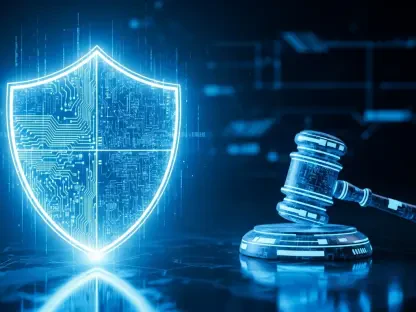The introduction of new cybersecurity regulations in New York signifies a landmark shift in securing the state’s water and wastewater infrastructure against rising cyber threats. Reports from the New York State Comptroller and federal bodies indicate increased vulnerabilities in water systems’ cyber defenses, making these regulations a critical bulwark in safeguarding public health and safety. With a $2.5 million grant initiative to support this regulatory transformation, New York’s move exemplifies a proactive stance amidst a global rise in cyberattacks targeting essential services, including incidents involving nation-state actors. Such measures highlight the state’s commitment to advancing technological security within its vital sectors, ensuring systems remain resilient and capable of mitigating future cyber intrusions.
Comprehensive Cybersecurity Regulations
New York’s new cybersecurity regulations target community water systems serving over 3,300 people, with even more stringent measures for those catering to more than 50,000 inhabitants. These actions are designed to compel water systems to implement comprehensive cybersecurity frameworks, an essential requirement given their traditionally low maturity levels in handling technological threats. The regulations mandate systems to conduct thorough risk assessments, enhance technical defenses, and develop comprehensive response strategies. By emphasizing the importance of preparedness, the initiative seeks to ensure that operations can seamlessly continue or swiftly recover during cyber emergencies. This push towards robust defense mechanisms underscores the necessity of staying ahead of evolving threats where the stakes—community safety and trust—are exceedingly high.
Expanding further, these regulations require water systems to devise and regularly practice response and recovery strategies. Preparation is essential to maintain continuity and provide security assurances in case of electronic disturbances. The regulations are not solely reactive but are also forward-thinking, equipping these systems with the resilience needed to counter a spectrum of cyber adversarial tactics documented in recent attacks. Such threats, as noted in incidents attributed to Iranian groups, necessitate bolstering technical defenses and comprehensive crisis response planning. The holistic approach illustrates New York’s dedication to not just preventing cyber incidents but ensuring rapid recovery to maintain public trust in essential services.
Financial Support and Grant Initiative
To mitigate the financial stress these enhanced cybersecurity mandates may impose, New York has introduced a $2.5 million grant program as part of its fiscal 2026 budget. Although specific timelines for application submissions are yet to be announced, the primary objective of this funding is to alleviate some of the burdens related to compliance. While the grant aims to ease costs, it is anticipated that these funds will only partially cover the extensive expenses associated with adherence to the new regulations. Estimates suggest annual costs could range from $150,000 for mid-sized systems to as much as $5 million for larger suppliers, underscoring a significant financial commitment.
This fiscal endeavor aims to strike a balance by providing financial assistance while encouraging systems to leverage innovation and prioritize cybersecurity spending. However, the potential shortfall might require additional funding support from ratepayers or taxpayers, a decision contingent upon the size and cybersecurity maturity of each water system. The state recognizes these demanding financial dynamics and has crafted the grant initiative to bolster the water systems’ transition to stringent security standards. This monetary backing reflects state readiness to invest in a fortified infrastructure ecosystem, preparing it to withstand and outmatch potential cyber threats.
Collaborative Efforts for Implementation
Engagement between New York state agencies and relevant stakeholders, including the American Water Works Association and local water authorities, remains fundamental in the seamless implementation of the new regulations. These collaborations aim not only to streamline regulatory processes but also to minimize redundancies and address workforce capacity concerns that water utilities might face. Many systems have already implemented certain cybersecurity measures and view these advancements as necessary, yet they remain cautious about the financial and operational implications. By aligning state rules with national guidelines provided by entities like the Environmental Protection Agency (EPA) and Cybersecurity and Infrastructure Security Agency (CISA), these regulations are designed to be both threat-informed and cost-efficient.
Despite ongoing collaborative efforts, prior attempts by federal entities to impose similar standards were met with legal challenges. These challenges raised by water industry groups, including certain lawmakers, focused on specific technicalities concerning regulatory enactment procedures. However, to circumvent such obstacles, New York has pursued an inclusive legislative pathway that invites public commentary and adapts regulations based on stakeholder feedback. This approach—underscored by Chief Cyber Officer Colin Ahern—ensures consistency with extant laws. It establishes a solid basis for the proposed rules while maintaining procedural integrity, demonstrating New York’s strategy towards achieving a balanced regulatory framework.
A Unified Strategy for Cybersecurity
New York has rolled out new cybersecurity regulations targeting community water systems that serve over 3,300 people, with stricter measures for those serving more than 50,000. These regulations are pushing water systems, traditionally less mature in tech threat management, to develop comprehensive cybersecurity frameworks. Systems are required to perform thorough risk assessments, bolster technical defenses, and establish detailed response strategies. The focus on preparation aims to ensure operations can withstand or quickly recover from cyber emergencies, highlighting the need for robust defense mechanisms to protect community safety and trust.
Moreover, these regulations demand systems formulate and regularly rehearse response and recovery plans, essential for continuity and security during electronic disruptions. The approach is both proactive and forward-looking, preparing systems to counter a range of cyber attack tactics recently seen, such as those by Iranian groups. This strategy emphasizes New York’s commitment not just to prevent incidents but to assure rapid recovery, sustaining public confidence in critical services.









